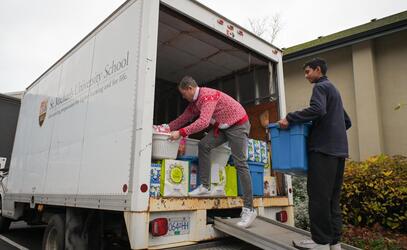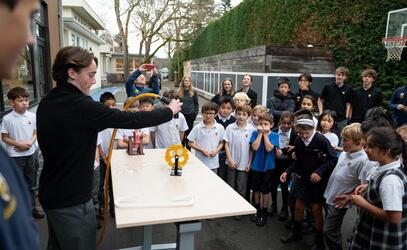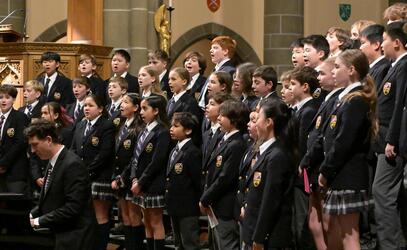Where does peacefulness begin? Is it something that happens "out there" in the world? And are we dependent upon others to achieve it for us? Peacefulness is an inner sense of calm, that infuses us with well-being. When we look for the roots of peace, we need look no further than within our own hearts.
Rev. Keven Fletcher sometimes shares a beautiful verse with us at our Monday morning Chapel, from the Chinese philosopher Lao Tzu in the 6th Century BC:
If there is to be peace in the world, there must be peace in the nations. If there is to be peace in the nations, there must be peace in the cities. If there is to be peace in the cities, there must be peace between neighbours. If there is to be peace between neighbours, there must be peace in the home. If there is to be peace in the home, there must be peace in the heart.
Of course, it is not just the heart that brings us peace, but a state of being that involves the body and mind working together. Children at the Junior School are learning to cultivate a sense of peacefulness from within, by understanding their emotions and staying calm when something or someone bothers them. Viktor Frankl wrote, "Between stimulus and response there is a space. In that space is our power to choose our response. In our response lies our growth and our freedom." This is the brief "meta-moment" that we teach children to use in order to calm their bodies and minds in order to act thoughtfully and peacefully rather than react in response to a trigger.
Taking three deep breaths ("smelling the roses") acts like an anchor for heart and mind. It is the grounding activity that engages the pre-frontal cortex, and paves the way for "green thinking" and making wise choices like using one's WITS. It’s a sophisticated skill that requires practice, and developing a regular mindfulness practice at home will help cultivate it.
As parents, we can feel pressure to create harmony and avoid conflict, to create a bubble around our children - but that’s not realistic. Peacefulness does not mean problem-free environments. It means handling problems peaceably. We can pave the way for peacefulness by modelling healthy conflict resolution, and by using non-violent communication. If we want it for our children, we must be prepared to model it ourselves.
Being able to achieve a state of peacefulness provides freedom. As children become more aware and better able to manage their emotions, they are less dependent upon their physical circumstances, events, or the acts of others to be able to achieve a state of well-being.
Here are some beautiful things our students have said about peacefulness:
- Peacefulness is being able to be calm when conflict is happening around you. When you would rather be somewhere else, you can simply imagine you’re in a peaceful place and cope with the problem.
- Peacefulness is feeling love and warmth all around you.
- Peacefulness is listening to the wind and the birds.
- Peacefulness is to be calm, when something overwhelming is happening or just being quiet for a few seconds and reflecting on what just happened.
- Peacefulness is being able to create a very quiet environment and feel good about yourself. It is also to be cared for and to care for someone. You should be quiet inside yourself.
- Peacefulness is inside you. You can’t see it but it’s always there.
- Peacefulness is when conflict happens not to run away but know how to deal with it in a nice way. Everybody has conflict at some point in their life.
- Peacefulness is a quiet place in your heart.
Here’s hoping that you and your children can experience the power of peacefulness. Here are a few questions to discuss with your children:
- If you believe in peace, how can people tell?
- What does peace not look like?
- Where does peace start for you?



